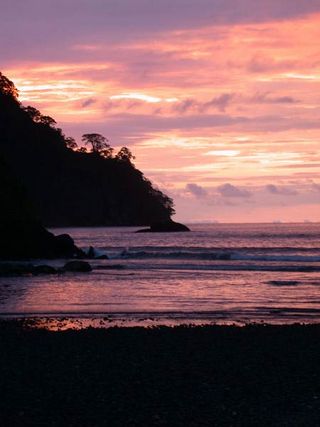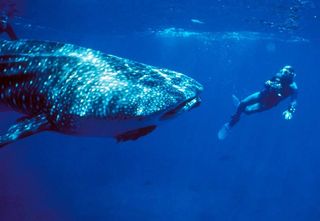
Costa Rica Unveils Massive New Marine Park

Costa Rica this week announced the creation of a vast new marine park several hundred miles offshore. Officials said the move is aimed at protecting the rich diversity of life in this Pacific Ocean region, as well as a group of undersea mountains.
The park, called Seamounts Marine Management Area, covers about 3,900 square miles (10,000 square kilometers) around Cocos Island, an uninhabited speck just over half the size of Manhattan, located 340 miles (550 km) off the coast of this Central American country. [See images of Cocos Island and its incredible sea life here.]
The island is sometimes known as Shark Island for the variety of its finned denizens. White-tipped reef sharks, whale sharks and scalloped hammerhead sharks prowl the island's tropical waters, which also support more than 30 marine species unique to the region.
Costa Rican President Laura Chinchilla Miranda signed the executive decree that established the new park yesterday (March 3), and conservation groups are applauding the move.
"Creating a protected seamount area sets an important precedent," said Marco Quesada, the Costa Rican marine program coordinator for the group Conservation International.
"Seamounts host endemic species, and the deep water that upwells along their sides brings nutrients that support rich feeding grounds for sea life on the surface," Quesada said. "Seamounts serve as stepping stones for long-distance, migratory species, including sharks, turtles, whales and tuna."

The newly established protected area, which is more than two-thirds the size of Connecticut, expands by five times what was already a no-fishing zone around Cocos Island.
Sign up for the Live Science daily newsletter now
Get the world’s most fascinating discoveries delivered straight to your inbox.
Known as Area Marina de Manejo Montes Submarinos in Spanish, the park is likely to include both fully protected and low-impact fishing zones, and will encourage the sustainable management of the ocean to protect two of the region's threatened species: leatherback turtles and scalloped hammerhead sharks.
Leatherback turtles are listed as critically endangered on the IUCN Red List of Threatened Species. The Costa Rican population of these turtles has declined by 40 percent in the last eight years, and 90 percent in the past 20 years, due in part to the loss of eggs to illegal harvest.
Scalloped hammerhead sharks are on the globally endangered species list, and are often targeted by fishermen for their fins, a prized commodity used in shark fin soup, and a lucrative product on the Chinese market.
Both scalloped hammerhead sharks and leatherback turtles are accidentally captured in commercial fishing operations.
National parks and reserves cover more than 25 percent of Costa Rica's land area.
This article was provided by OurAmazingPlanet, a sister site to LiveScience .

